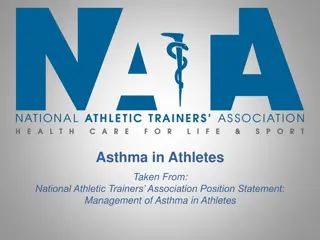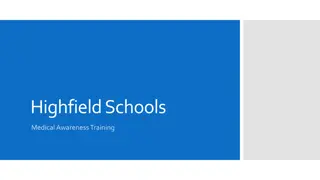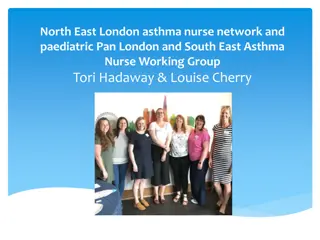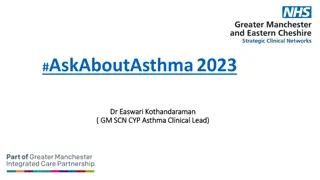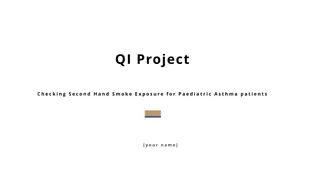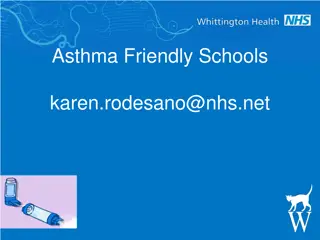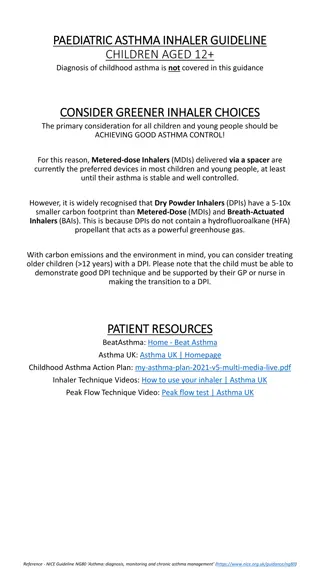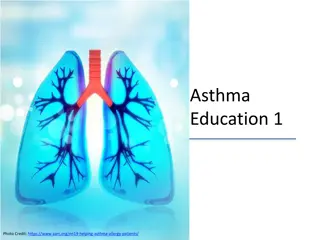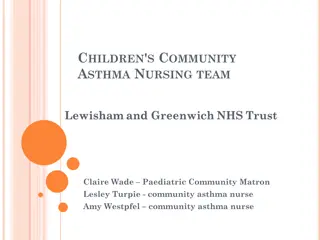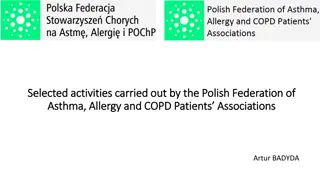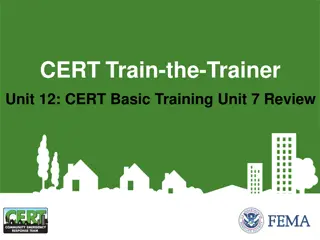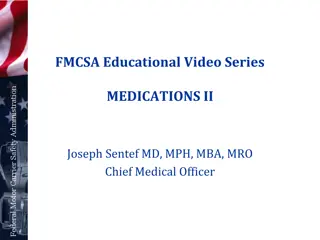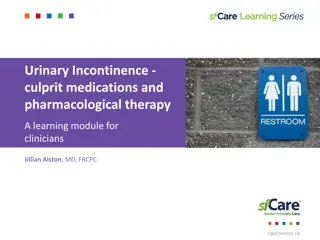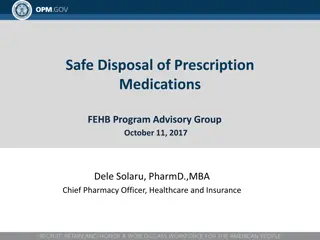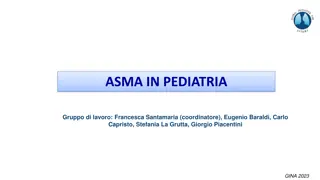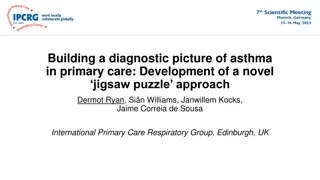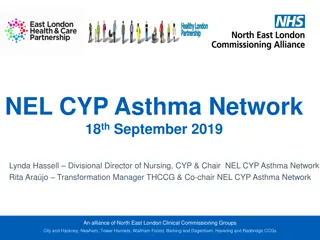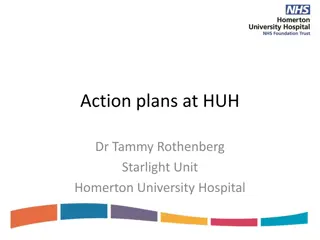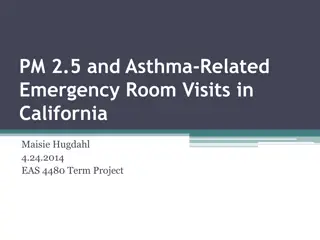Understanding Asthma Medications: Maintenance vs. Rescue
Asthma, a chronic condition, can be managed with two main forms of medications - maintenance and rescue. Maintenance medications are taken daily to prevent symptoms, while rescue medications are used as needed during asthma flares. Overusing rescue medications can reduce their effectiveness, so it's essential to follow proper guidelines. Different types of maintenance and rescue medications are available, each serving a specific purpose in managing asthma symptoms effectively.
Download Presentation

Please find below an Image/Link to download the presentation.
The content on the website is provided AS IS for your information and personal use only. It may not be sold, licensed, or shared on other websites without obtaining consent from the author. Download presentation by click this link. If you encounter any issues during the download, it is possible that the publisher has removed the file from their server.
E N D
Presentation Transcript
Asthma Education 3 Photo Credit: https://www.aarc.org/nn19-helping-asthma-allergy-patients/
1. Using your rescue inhaler (or puffer) every day is: a) Usually a bad idea and can be dangerous b) Important to keep your asthma under control c) Something everyone with asthma needs to do d) Called asthma maintenance 2. Why might someone use a spacer with their inhaler? a) A spacer helps make sure the medicine gets down into your lungs where it s needed. b) Spacers helps maintain your asthma c) A spacer can make asthma medicine taste better d) Spacers help you take bigger breaths Module 3 Questions 3.Why shouldn t you use asthma rescue medicines every day? a) It is too expensive b) Asthma rescue medicines are dangerous c) If you use them too often, they may get too powerful d) If you use them too often, they may not work as well if you have a bad asthma attack 4.True/False: You only need to treat asthma when you feel bad. a) True b) False
Asthma is not yet curable, but it is treatable. It is a chronic condition. There are two main forms of medication to treat asthma, maintenance and rescue. Maintenance medications are typically taken every day to prevent asthmatic symptoms. Rescue medications are taken as needed when your symptoms become worse or you experience an asthma flare. If you use them every day, they can lose their effect and not work as well. Medicines, Maintenance, and Rescue
Maintenance Medication Maintenance Medications Inhaled corticosteroids: Reduce swelling and mucus in the lungs. Inhaled long-acting beta agonists: Relax the smooth muscle around the airways to help them open. Always used in conjunction with an inhaled corticosteroid. Biologics: Target a specific cell or protein to prevent airway inflammation. Delivered by shot or infusions on a bi-weekly to monthly basis. Leukotriene modifiers: Reduces airway swelling and relaxes smooth muscle. Taken as a pill or liquid. Inhaled long-acting muscarinic antagonist: Same action as long-acting beta agonists, but use a different mechanism. Used in conjunction with an inhaled corticosteroid.
Rescue Medications Short-acting beta agonists: Relax the smooth muscle around the airways. Anticholinergics: Relax the smooth muscle around the airways and reduce mucus. Not as quick as short-acting beta agonists. Both types of rescue medications are inhaled and can be used together in a combination quick-relief medication.
When to Use Rescue Medications Only use rescue medication when you are experiencing asthma symptoms. Using your rescue medication too frequently can reduce its effectiveness. If you are having to use rescue medication more than twice a week, your asthma is not well controlled. You should talk to your doctor about altering your asthma treatment.
Inhaler Devices Most maintenance and rescue medications are inhaled using inhalers. Inhalers allow for the medication to be delivered directly to the lungs. There are several different types of inhalers and each has a different way of delivering the medication. The two main types of inhalers are: Metered Dose Inhalers (MDI) Dry Powder Inhalers (DPI)
Types of Inhalers Types of Inhalers Metered dose inhalers (MDI) *use with spacer* aerosol produced for you - inhale SLOWLY Dry powder inhalers (DPI) you create aerosol - inhale FORCEFULLY Soft mist inhalers (SMI)
Exception The Breath- Activated MDI General Categories for Inhaler Types: MDIs (HFAs) are push-activated DPIs (powders) are breath-activated EXCEPT FOR QVAR Redihaler which is a breath-activated MDI Advantage: no need for hand-breath coordination or spacer Disadvantage: need to be able to generate sufficient peak inspiratory flow to activate device Great for older patients who can inspire fast and hard enough to activate the device & they do not need to carry a spacer Problematic for younger children who cannot inspire fast and hard enough to activate the device (typically kids need to be at least 6 years old, however, the FDA has inappropriately approved down to 4 years of age)
Metered Dose Inhalers Metered dose inhalers are the most common form of inhaler used. MDIs are push activated. They produce an aerosol that you SLOWLY inhale. MDIs require hand-breath coordination and can be more difficult for children to use. A spacer should be added to remove the hand-breath coordination element. Spacers also help increase the amount of medication that is delivered to the lower airways. Photo credit: https://www.aksharpediatrics.care/illnesses- symptoms/asthma-attack/
Using a MDI with a spacer www.cdc.gov/asthma
Dry Powder Inhalers Dry powder inhalers are breath activated. DPIs require you to create the aerosol. In order to do this you will need to be able to forcefully inhale and hold your breath for 10 seconds. DPIs do not require hand-breath coordination or a spacer. DPIs are not effective if your inhalation is not strong enough and can be more difficult for young children to use.
Using a DPI American Academy of Pediatrics
Nebulizers Nebulizers can be used for patients who are unable to use inhalers, such as small children. They create a mist from a liquid medication that you then inhale. Nebulizers are no more effective than inhalers, when used correctly, and should only be used when necessary. They are often more expensive and are more limited than inhalers in the types of medications that are available. Photo credit: https://asthma.net/living/long- wait-inhaler-puffs/
Using a Nebulizer Nationwide Childrens
1. Why shouldnt you use asthma rescue medicines every day? a) If you use them too often, they may get too powerful b) It is too expensive c) If you use them too often, they may not work as well if you have a bad asthma attack d) Asthma rescue medicines are dangerous Module 3 Questions (re-visited) 2.True/False: You only need to treat asthma when you feel bad. a) True b) False 3. Using your rescue inhaler (or puffer) every day is: a) Something everyone with asthma needs to do b) Usually a bad idea and can be dangerous c) Called asthma maintenance d) Important to keep your asthma under control 4. Why might someone use a spacer with their inhaler? a) Spacers helps maintain your asthma b) A spacer helps make sure the medicine gets down into your lungs where it s needed. c) Spacers help you take bigger breaths d) A spacer can make asthma medicine taste better


